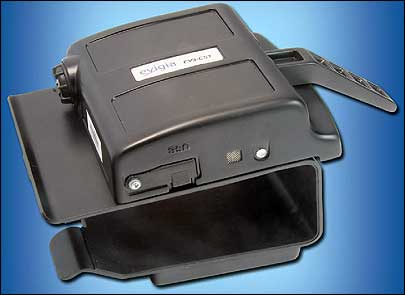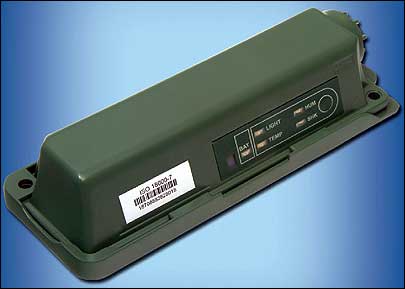Sep 08, 2008Evigia, an Ann Arbor, Mich., manufacturer of RFID and sensor equipment, has unveiled a new family of active RFID transponders and interrogators operating at 433.92 MHz and compliant with the ISO 18000-7 standard.
The company's new EV3 product line includes seven transponders and three interrogators, all designed to increase the visibility of assets in transit, monitor security breaches of those assets and help manage and maintain an efficient and timely supply network, says Karl Ma, Evigia's VP of sales and marketing. In addition to complying with the ISO standard, Ma says, the products meet requirements set forth in a request for proposal (RFP) recently issued by the U.S. Department of Defense (DOD), which Evigia and other vendors are presently bidding on in the hopes of being able to sell products and services to the DOD under a three-year contract, dubbed RFID III (see DOD Issues RFP for Active RFID).

Included in the EV3 product line is an asset-tracking transponder incorporating temperature, humidity, shock and light sensors. The Sensor Transponder enables companies to monitor, in near-real time, the environmental conditions of assets as they traverse the supply chain. The light-sensing capabilities, for instance, could determine that a container was opened during transit, potentially indicating the goods were being exposed to outside elements. And the temperature-sensing capabilities could indicate if goods that need to be kept cool are in danger of becoming too warm. Armed with such information, companies can then identify harmful conditions and resolve them before irreparable damage occurs.
Other transponders in the EV3 series include the Asset Transponder, the Asset Transponder with Non-Replaceable Battery, the License Plate Transponder and the Data Rich Transponder (with increased memory size). The Low Profile Data Rich Transponder, featuring low power consumption, large memory storage and an internally encased battery, has an ultra-low profile to make the tag suitable for use with non-intrusive or discrete applications. The Container Security Transponder—which, like the Sensor Transponder, includes temperature, humidity, shock and light sensors—also offers breach sensor functions and a mounting component designed specifically for shipping containers.
The three interrogators in the EV3 family are the Active Fixed Interrogator, a long-range device with an internal omni-directional antenna; the Active Transportable Interrogator (ATI), a long-range, omni-directional device that can be networked with other ATIs and data-collection devices to form the backbone of an active RFID reader network; and the Hand-held Interrogator Module, which can be clipped onto the Motorola MC 9090 handheld computer.
All of the EV3 products, Ma says, comply with the ISO 18000-7 standard. To enable this compliance, Evigia had to license certain technologies from Savi Technology (see Seven Companies Sign Up for Savi IP License).
Those lab tests, Ma explains, were designed to ensure that the products could perform basic functions, such as whether an interrogator could activate a transponder and exchange information with it. "Those lab tests asked very basic questions, but didn't look at how to make sure one vendor's interrogator talks with another vendor's tag," he says. "That was never resolved, so in November [2007], we answered the question, 'How do we make sure we are interoperable?' by testing our products with Savi's."

The interoperability tests were conducted at the RFID Center of Excellence in the University of Pittsburgh's Swanson School of Engineering. "The significance," Ma says, "is we believe that we [Evigia and Savi] are the only ones whose products can interoperate. You have to have a Savi tag be able to be read by an Evigia reader, and vice versa. If you don't do that—if you don't have interoperability—if the Army buys a half-million dollars worth of equipment from one vendor and another part of the DOD buys a half-million dollars worth of equipment from another vendor, how do you know they will work together?"
Although Evigia's products comply with all of the requirements in the DOD's RFP (which had an initial deadline of Sept. 3 that has since been moved to Sept. 10), the company has differentiated its products by putting all of the functionality for each product on a single silicon chip, or application-specific integrated circuit (ASIC). "With ASICS, that's how, for example, cell phones were able to be designed so small, compared to when they were first introduced," Ma explains. "And with an ASIC, power consumption goes down, costs go down, size goes down. So in that sense, we are different from Savi."
Because Evigia has not yet begun bidding on specific projects (other than the RFP), Ma is hesitant to reveal details regarding prices for its products, which are available now. "I could tell you," he says, "but I don't really want Savi to know."


